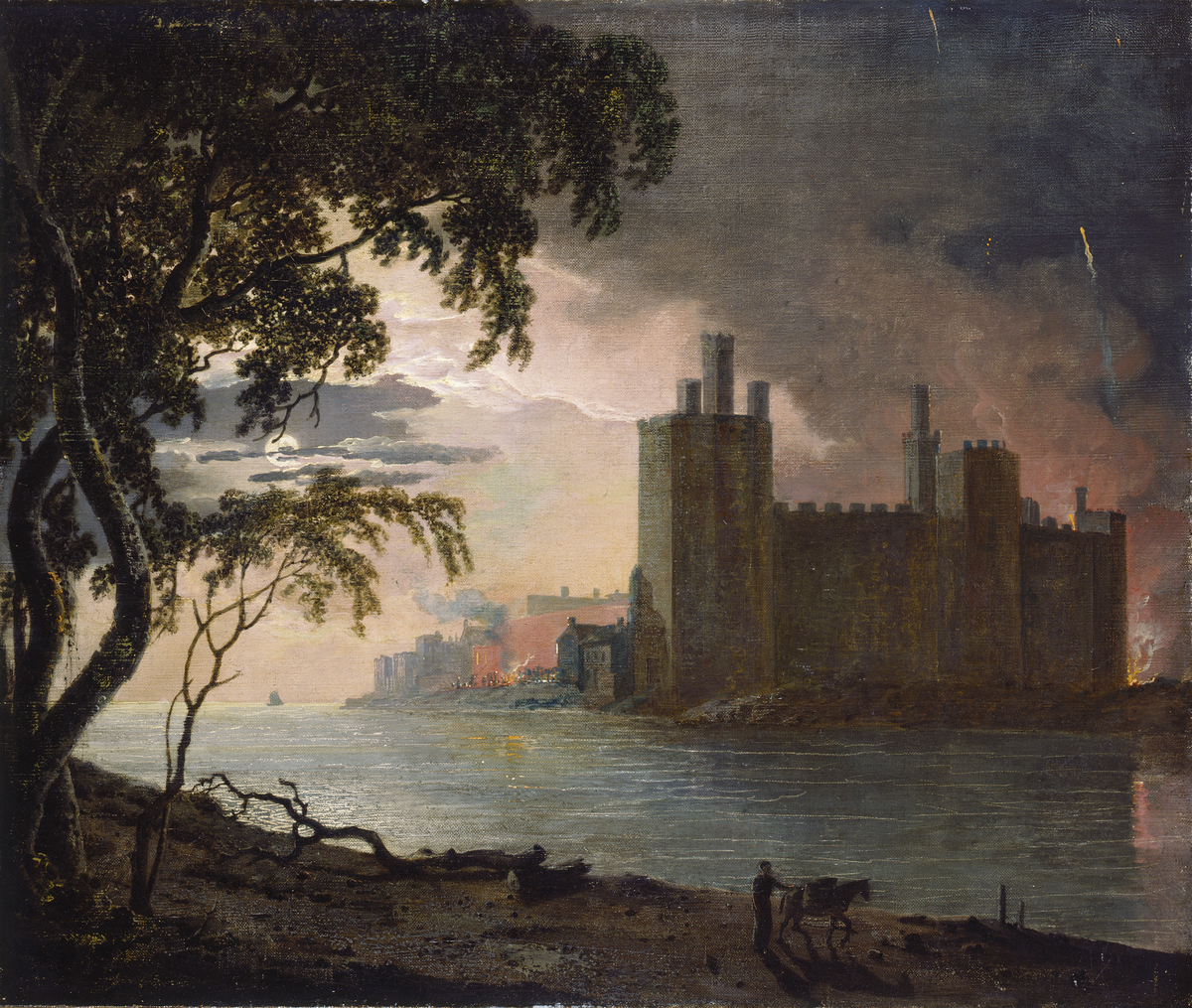Caernarvon Castle by Moonlight
Joseph Wright of Derby A.R.A. 1734 - 1797
Summary
Moonlit view of Carnarvon Castle seen across a stretch of water from the near shore. In the left foreground, growing on the banks of the shore, are trees silhouetted against the light cast by the moon; walking close to the water's edge is a single figure resting his hand on the hindquarters of a pack pony; branches and the trunks of trees have been washed up along the waterline. The stretch of water is calm, with light caught on the surface of the ripples highlighted. On the far shore, close to the water's edge, is the dark, looming form of the castle; its exterior walls constructed as a series of hexagonal towers linked by high, crenellated walls. Fires burn in the buildings surrounding the castle causing the sky on the right of the composition to fill with dark smoke. The land in the foreground is referred to locally as 'Coed Helen' (Helen's Wood); the stretch of water is the estuary of the Seiont River where it meets the Menai Straits; the estuary quay is now known as 'Slate Quay'.
Display Label
Gallery text panel Face and Place Portraiture and Landscape in the 18th Century A dramatic growth in Britain's wealth during the 1700s brought about an increased demand for art and design. Hundreds of grand houses were built or improved and many were filled with impressive private collections. The prominent display of paintings and decorative arts demonstrated their owners' status and taste. Portraiture became particularly fashionable, leading to rising numbers of 'face painters' and to an increase in the quality of their work. The ability to capture a likeness was most important but artists could also enhance a sitter's image with qualities such as prestige, wisdom or power. New public exhibitions gave artists a shop window and the Royal Academy, founded in 1768, organised the most important annual show. Amid this developing climate of enthusiasm for art, landscape painting also began its remarkable evolution. Landscape arose from a need to accurately record views and was first thought to be of little artistic merit. But as painters grew in confidence during the later 1700s it was treated with more creativity and seriousness, establishing a distinctive tradition in British art.
Object Name
Caernarvon Castle by Moonlight
Creators Name
Date Created
1780-85
Dimensions
Canvas: 54cm x 64.4cm
framed (approx): 70.5cm x 80.7cm
accession number
1905.7
Place of creation
England
Support
canvas
Medium
oil paint
Legal
© Manchester Art Gallery

